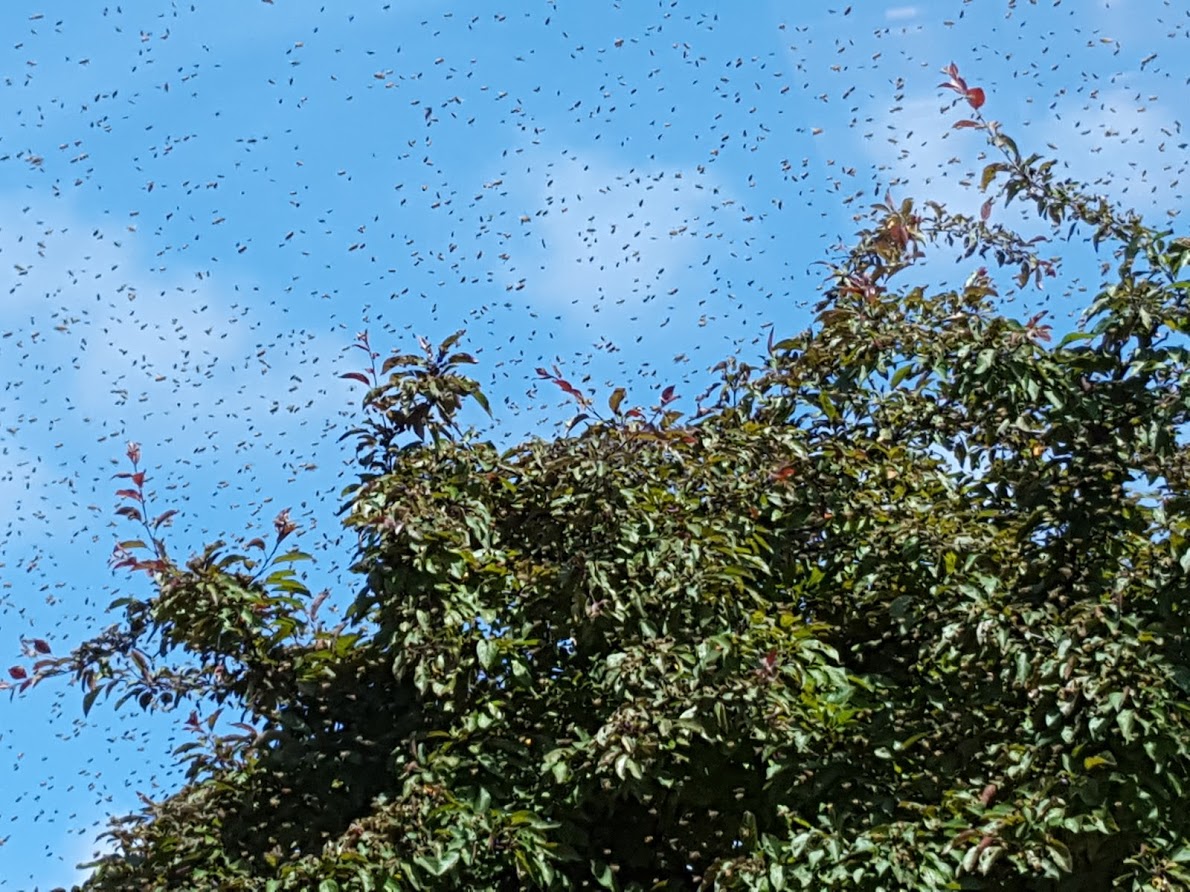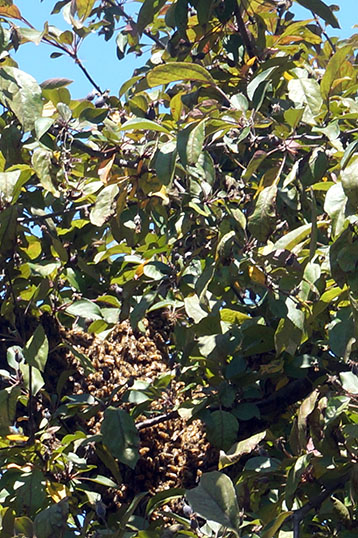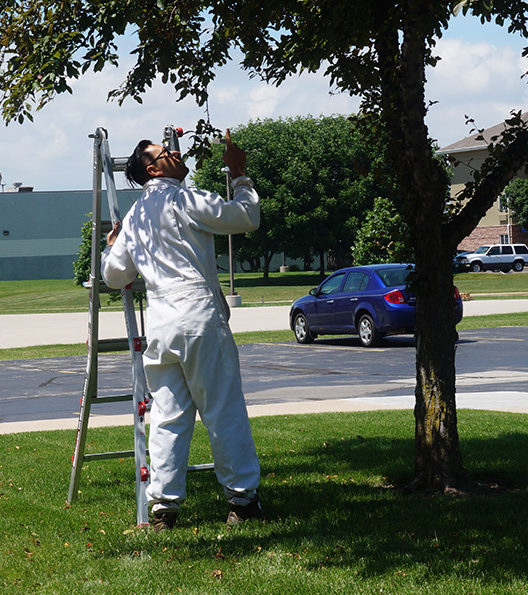Bees swarm to Foundation office in support of grant
By David Horst – Donor Services and Environmental Grants Manager
There’s no limit to how far the Community Foundation will go to explore a charitable interest of its donors.

The bees arrive.
How else do you explain a swarm of honeybees settling into a tree in front of the office just days after Dick and Karen Gosse expressed interest in funding a pollinator research project?

Bees nestled in the tree.
Just after 11 a.m. on Wednesday, thousands of bees began hovering around a crab apple tree near the Foundation’s front entrance. Over the next half-hour, they settled onto a branch, forming a pile of bees the size and shape of a small football.
Just last week, I had spoken with Prof. Israel Del Toro of Lawrence University about his research project on native pollinators, including sites on the Lawrence campus, at Bubolz Nature Preserve and on the roof of a downtown Appleton business. When we spoke by phone, Del Toro was at an Appleton restaurant capturing a swarm of bees. The Gosses were interested in supporting his research work with a grant.
Looking at a cloud of honeybees hovering outside of the office window Wednesday, I reached for the phone and called Del Toro. He came over, surveyed the situation and returned with equipment to capture and relocate the bee colony.

Prof. Israel Del Toro, Lawrence University
Del Toro explained that the home colony of the bees must have grown too large. A portion split off and selected a new queen. The queen flew as far as she could, which turned out to be at the Community Foundation office at 4455 W. Lawrence St. in Grand Chute. She landed in the tree and the worker bees formed the football-shaped mass to protect her.
Del Toro set three bee boxes below the tree in an attempt to lure them in and move them. The trick is to get the queen, he said, and the worker bees will follow. He blasted the football with a leaf blower. The queen wasn’t going for it, so Del Toro returned later with longtime beekeeper Larry Cain.
They cut off the branch that held most of the bees, shook them into the bee box and eventually succeeded in relocating the queen. The other bees slowly followed.
Cain estimated the size of the swarm at 12,000 bees. He said they most likely came from a domestic hive in the area. Disease, poisons in herbicides and habitat loss combine to cause a 90% loss annually for beekeepers.
Del Toro’s odds are looking pretty good for that grant. If you would like to support pollinator research from your fund, contact me at the Community Foundation, 920-830-1290 or dhorst@cffoxvalley.org.



We received a warm welcome when visiting the Foundation this afternoon. Thanks for bringing out all the bees.